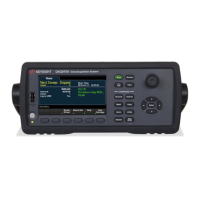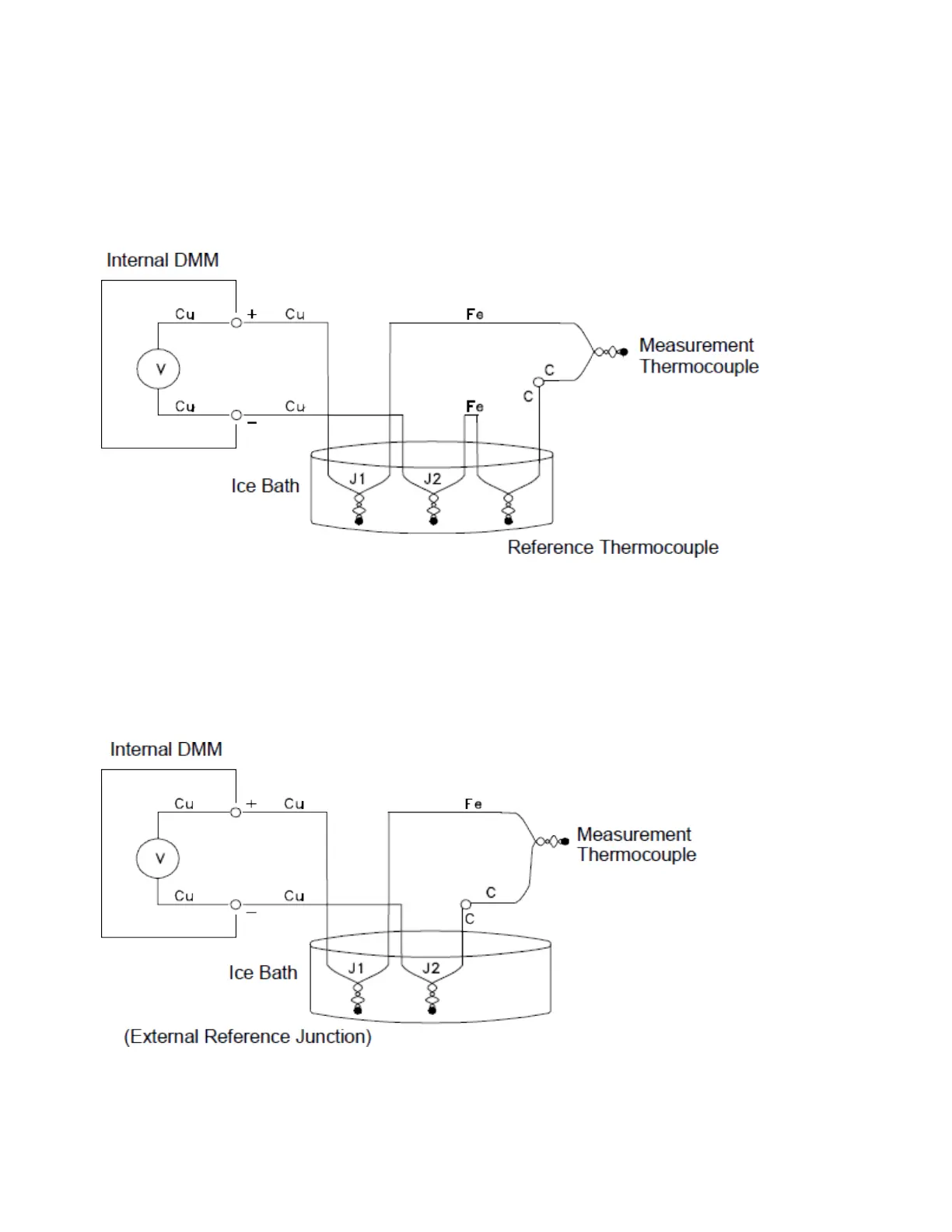Two additional thermocouples have been created where the iron (Fe) lead connects to the internal DMM’s
copper (Cu) input terminals. Since these two junctions will generate opposing voltages, their effect will be
to cancel each other. However, if the input terminals are not at the same temperature, an error will be cre-
ated in the measurement.
To make a more accurate measurement, you should extend the copper test leads of the internal DMM
closer to the measurement and hold the connections to the thermocouple at the same temperature.
This circuit will give accurate temperature measurements. However, it is not very convenient to make two
thermocouple connections and keep all connections at a known temperature. The Law of Intermediate
Metals eliminates the need for the extra connection. This empirical law states that a third metal (iron (Fe) in
this example) inserted between two dissimilar metals will have no effect upon the output voltage, provided
the junctions formed are at the same temperature. Removing the reference thermocouple makes the con-
nections much easier.
This circuit is the best solution for accurate thermocouple connections.
In some measurement situations, however, it would be nice to remove the need for an ice bath (or any
other fixed external reference). To do this, an isothermal block is used to make the connections. An
4Measurement Tutorials
188 Keysight DAQ970A User's Guide

